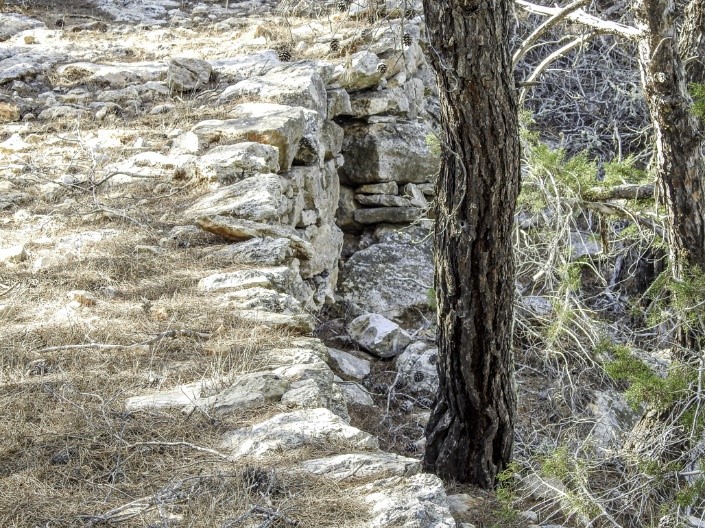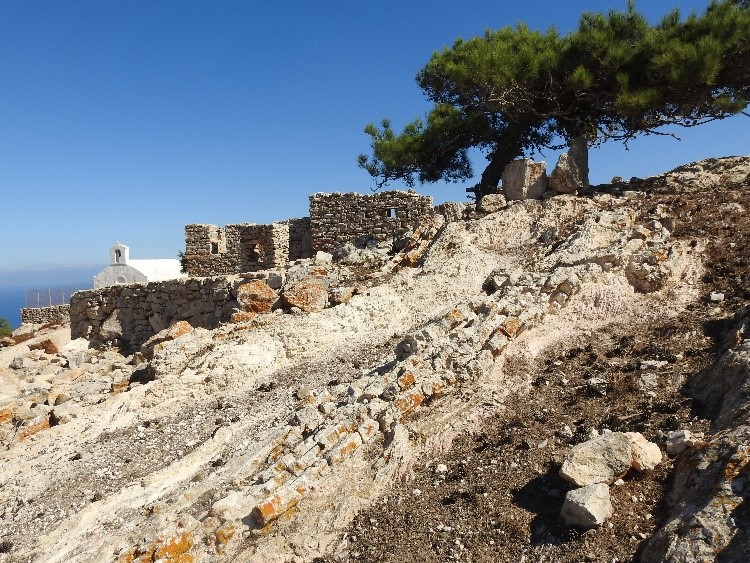|
Home
Page 1/8 (this page)
Page 2/8
Pages 3-8 under construction
|
Gavdos Island, a Lifted and Tilted Aegean Crustal
Block
Text, photography: Annemieke van Roekel, geoscience journalist
More articles: www.vuurberg.nl.
This article on the geology of Gavdos was first published in Gea Magazine (March 2020) and has been (partially) translated into English.
Thanks to Kellin Defiel for her corrections.
The island of Gavdos, the southernmost island on the European continent, is a destination for those seeking peace and quiet,
beachcombers, hikers, archaeologists and geologists.
Visible from the coast of Crete, this tiny island is a pearl in the Libyan Sea.
Under the Roman name of Claudia, it is mentioned in the Bible (Acts 27) by the Apostle Paul. Exactly at this point in the eastern Mediterranean,
an ancient sea floor has risen above the water, offering an undisturbed view of the astronomical cycles of the Miocene geological era.
Gavdos is a small and relatively unknown island southwest of Crete. On clear days, the high mountains on either side of Crete's famous Samaria Gorge can be clearly seen.
The island is particularly popular with travellers who want to camp freely under and among the juniper trees and tamarisks on the northern beaches.
In recent decades, a handful of apartments have been built. The tourist pressure is limited to the summer months. Around forty people live on the island all year round.
 
Fig. 1. Ancient path. Fig. 2. Limestone layers in the village of Ambelos.
Photo's: A. van Roekel.
Venetian pavement
With an area of approximately 30 sq. kilometres, the almost audible silence, the Mediterranean Sea visible from
almost every location, trees in the most capricious forms and the possibility of walking
virtually everywhere,
it is an attractive travel destination (fig. left).
For some years now, the hiking trails have been well marked, most of which must be very old.
For instance, the breathtaking path through pine woods between the centrally located village of Kastri and Ambelos, to the west, possibly an
ancient pavement of local Pindos limestone (fig. right).
'This pavement possibly dates back to the Venetian period,' says Katerina Kopaka, archaeology professor at the University of Crete in Heraklion.
Since the early 1990s, Kopaka travelled to Gavdos almost every summer to supervise archaeology
students.
'After spending many years systematically mapping the archaeology of the entire island, we are now northeast of Kastri doing excavations on a site where a large agricultural residential complex once stood.
It dates from before the middle of the second
millennium BC.' Archaeologists have proof that Gavdos was already inhabited in the Middle Neolithic Period (5000 BC).
Kopaka's work has shown that many generations and thousands of people must have lived here at the southernmost tip of the European continent.
The lichen-covered and dilapidated terrace walls suggest that there must have been an intensive agricultural culture here.
Copyright: Annemieke van Roekel
Last update: 12 April 2025
|